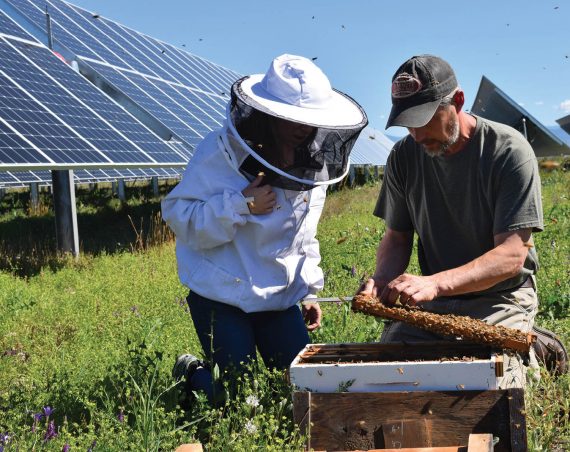A solar apiary combines solar power and pollination
written by James Sinks Honeybees dance and dip among the lightly shaded wildflowers in this patch of Rogue Valley farmland, zipping between splotches of color and—when filled with pollen—curl back to their boxed hives to offload their cargo, and then start anew. It’s almost a normal agricultural view. Until you look upward. The canopy above the carpet of wildflowers is not made up of tree branches, but rather rows of solar power panels, covering some 40 acres near Eagle Point. The installation came online in 2016 and produces 10 megawatts of renewable electricity—enough to supply the power needs of roughly 8,000 houses. To Rogue River beekeeper John Jacob, the dual-use solar site—the nation’s largest “solar apiary”—is a thoughtful example of how farms of the future can coexist with renewable energy, and make the world better. And importantly, he said, the sites can act as organic refuges for stressed pollinators, who…





